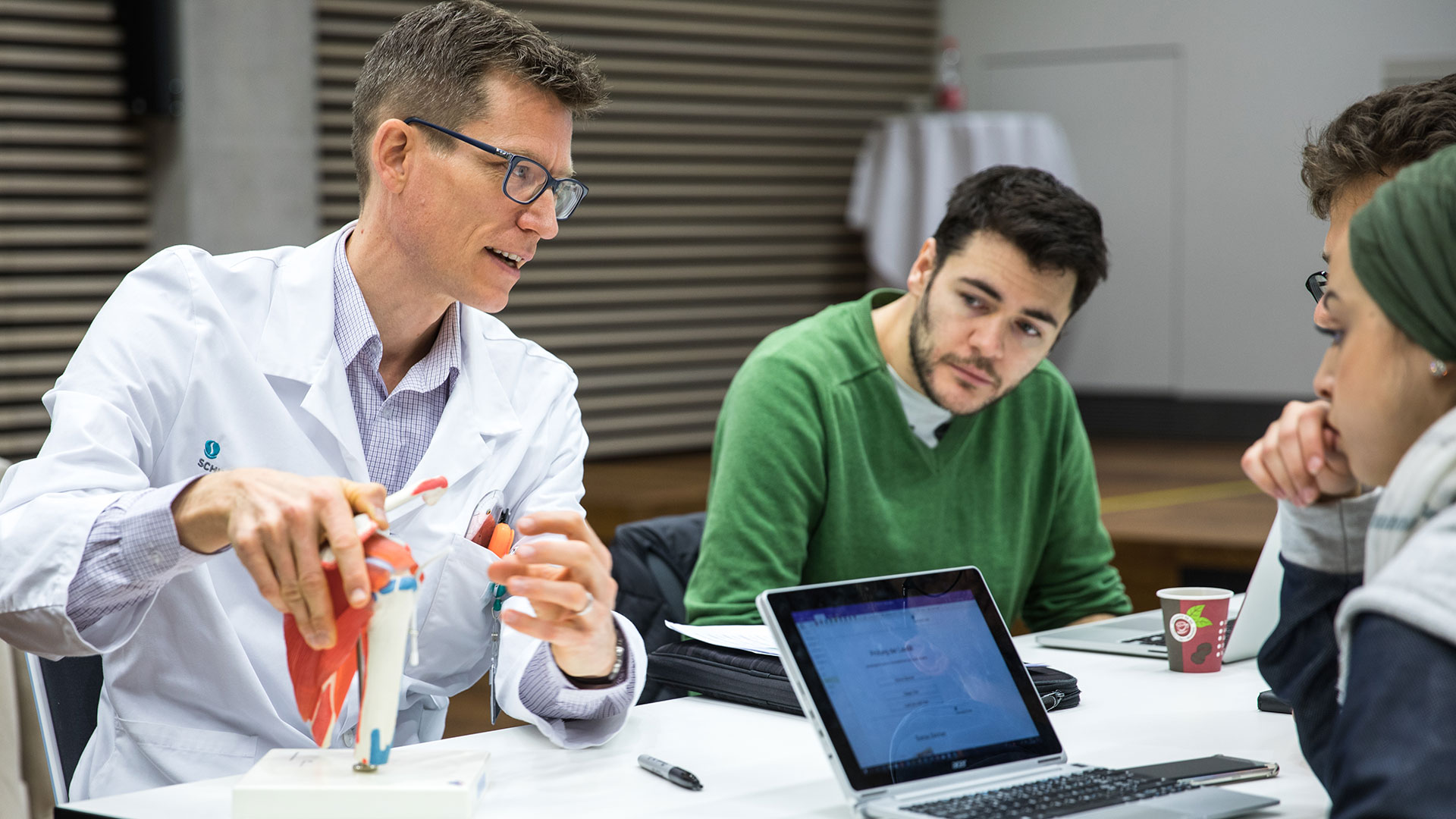Learning, teaching and assessment in medical studies
Curriculum mapping as an instrument for the conception and evaluation of learning, teaching and assessing in an undergraduate medical program.

As part of her doctoral thesis (Dr rer. med.), Tuija Waldvogel will focus on curriculum mapping as a tool for designing and evaluating learning, teaching and testing in human medicine programmes at ETH Zurich and the Università della Svizzera italiana (USI) in Lugano.
The doctorate will begin in autumn 2024 at the external page Faculty of Health Sciences, Brandenburg Medical School (MHB). It will be conducted via the Professorship for Health Science Education Research and Evidence-based Teaching and Learning Methodology under external page Prof. Dr Olaf Ahlers. The cumulative doctoral thesis comprises three scientific publications and is scheduled for completion in spring 2027.
Internationally, it is recommended to develop medical curricula based on competency-based catalogues of learning objectives in order to enable optimal learning. Particular attention should be paid to the logical structure of learning objectives, teaching and examinations (constructive alignment) ([1]). In order to meet these demands on medical education, the use of curriculum mapping is recommended [2] in order to transparently present what is learnt (learning objectives), when and how it is taught and learnt (course & self-study) and how it is tested (theoretical and practical examinations).
The aim of this doctoral thesis is to evaluate the development and successful implementation of a newly developed competence-based medical degree programme based on a national catalogue of learning objectives. This evaluation takes place in three steps, which cover the three variants of a curriculum according to Harden [2]: the planned curriculum, the taught curriculum and the curriculum ‘received’ by the students. This is reflected in the following three scientific publications.
1) An optimally planned curriculum is the prerequisite for meaningful implementation by lecturers. For this reason, we first use the cardiovascular system as an example to evaluate whether the learning objectives build on each other in a meaningful way throughout the programme in the sense of a learning spiral. We carry out this analysis based on the mapping of the curriculum (curriculum mapping) against the national catalogue of learning objectives.
The planned working title for the associated publication is: ‘How to ensure a coherent and coordinated learning spiral in a competency based medical curriculum?’
2) The next step is to analyse the taught curriculum by evaluating the communication and coverage of the learning objectives in the courses. The results of the evaluation of three concurrent semesters are analysed and made available to the lecturers in order to enable better congruence between the planned and taught curriculum for the following year. This next implementation will be evaluated again in order to measure the potential improvement in congruence.
The planned working title for the associated publication is: ‘Evaluation and improvement of communication and coverage of learning objectives in a medical curriculum.’
3) As a final step, we evaluate whether the students have achieved the learning objectives and thus ‘received’ the planned and taught curriculum. For this investigation, we specifically develop an examination whose questions are based without exception on the specified learning objectives. With the help of a student survey, we analyse the extent to which the learning objectives were used by the students to prepare for the written examination. We will then analyse the examination results in order to measure the influence of the use of the learning objectives.
The planned working title for the associated publication is: ‘Impact of learning objectives on results of a written exam in a medical curriculum.’
Literature:
1. Biggs, J., Aligning teaching and assessing to course objectives. International Conference on Teaching and Learning in Higher Education: New trend and innovations, 2003. 2.
2. Harden, R.M., AMEE Guide No. 21: Curriculum mapping: a tool for transparent and authentic teaching and learning. Medical Teacher, 2001. 23(2): p. 123-137.